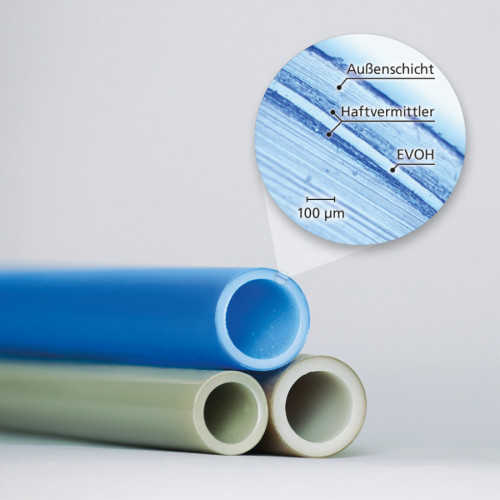Optical coherence tomography (OCT) is an imaging technique for generating cross-sectional images with high axial and lateral resolution and is used in ophthalmology, among other areas.
 A multi-layer plastic tube, consisting of an outer and inner layer with an EVOH layer bonded between them using an adhesion promoter (Photo: Fraunhofer ITWM)
A multi-layer plastic tube, consisting of an outer and inner layer with an EVOH layer bonded between them using an adhesion promoter (Photo: Fraunhofer ITWM)
The Fraunhofer Institute for Industrial Mathematics ITWM uses this technology to measure the thickness of very thin layers and is developing the next generation of these measuring systems in the "Thin-film OCT" project. The aim is to improve the resolution limit of OCT systems from currently around 10 µm to less than 2 µm.
In optical coherence tomography, the light used, in the visible or near-infrared wavelength range, penetrates a transparent sample and is partially reflected at the boundary layers and then detected. By analyzing the interference pattern of the detected signal, it is then possible to calculate the layer thicknesses.
Applications include transparent paint coatings, packaging and films, coated wafers, glass substrates, thin wires and the layer structure of tubes and hoses.


